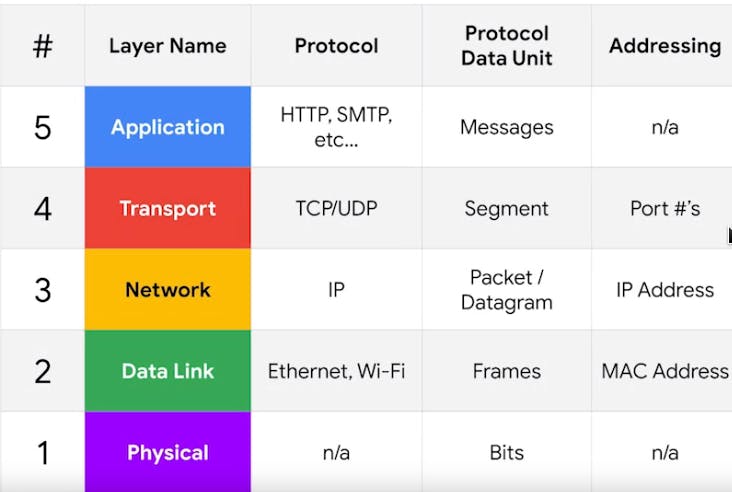Think of the internet as a gigantic, complex postal system. For your messages (emails, photos, website requests, etc.) to reach their destination, they need to be packaged, stamped with an address, and given a delivery route. This is where the TCP/IP model comes in – it's the blueprint for how data moves across the internet. Before diving into TCP/IP, let's travel back in time to a world without networking models and discover why TCP/IP reigns supreme.
World Without Networking Models: A Messy Past
In today's interconnected world, it's easy to take for granted the fact that our computers, phones, and everything in between can seamlessly talk to each other. But this simplicity wasn't always the case. Before the dominance of TCP/IP, the world of computer networking was a chaotic mess.
The Wild West of Proprietary Networks
Imagine trying to have a conversation where everyone speaks a different language – that's what the digital world was like before TCP/IP came along. Computers from different brands couldn't communicate without elaborate workarounds. That was the norm!
Companies like IBM had their own proprietary networking models (like SNA), essentially creating isolated islands of connectivity. If you had equipment from multiple vendors, you needed multiple, complex networks just for things to function.

The Showdown - OSI vs. TCP/IP
The need for open standards was clear. The International Organization for Standardization (ISO) stepped in to create the Open Systems Interconnection (OSI) model – a grand vision of universal computer communication. Meanwhile, a scrappier effort funded by the U.S. Department of Defense led to the development of a competing model: TCP/IP.
Throughout the 1990s, companies grappled with either OSI, TCP/IP, or the headache of supporting both. However, by the end of the decade, TCP/IP emerged as the clear winner. OSI, hindered by a slower development process, faded into obscurity.
Why TCP/IP Won
It's fascinating that TCP/IP, a model largely built by enthusiastic volunteers, triumphed. This victory highlights the power of streamlined development and adaptability in the fast-paced world of technology.
Simplicity & Adaptability: TCP/IP's design focused on core essentials for networking, making it streamlined and efficient. It could easily adapt to new technologies and evolving needs.
Open Standards: TCP/IP was developed out in the open, encouraging collaboration and preventing any single vendor from controlling it. This fostered innovation and competition.
Volunteer-Driven Development: Passionate volunteers drove the development of TCP/IP, leading to rapid progress and flexibility compared to the slower, more formal process behind OSI.
Focus on Practicality: TCP/IP solved real-world problems. It didn't get bogged down in an overly theoretical model, making it easier to adopt and use.
Early Successes: TCP/IP was used in the early days of the internet, giving it a foothold and building momentum as the internet exploded in popularity.
Compared to OSI:
Complexity: OSI's seven-layer model was more complex and rigid compared to TCP/IP's more streamlined approach.
Bureaucracy: OSI's development involved a large committee-based process, often slowing down progress and innovation.
Poor Timing: OSI was finalized when TCP/IP had already gained significant traction, making it difficult to displace the established protocol.
What is the TCP/IP Model?
TCP/IP (Transmission Control Protocol/Internet Protocol) isn't just one thing; it's a massive collection of protocols (like rules and guidelines) that govern how computers communicate. These protocols are carefully documented in Requests For Comments (RFCs). What's ingenious about TCP/IP is that it builds upon existing work. If a standard, like Ethernet, already exists, TCP/IP doesn't reinvent the wheel – it simply references it!

TCP/IP is a set of rules that govern how computers talk to each other over a network. It's broken down into several layers, each with specific responsibilities for efficient data transmission.
The TCP/IP Layers: The Magic Behind the Scenes
The reason you can fire up your laptop and instantly access websites or use apps is because TCP/IP is built into its operating system and hardware. Imagine all the invisible agreements happening behind the scenes ensuring your messages get sent and received flawlessly.
Let's break down the layers:
| Layer Number | Layer Name | Protocols | Addressing | Devices |
| 5 | Application | HTTP, SMTP, FTP | None | Your computer, web servers, email clients |
| 4 | Transport | TCP, UDP | Port numbers | Your computer, web servers, email clients |
| 3 | Network (Internet) | IP | IP addresses | Routers |
| 2 | Data Link | Ethernet | MAC addresses | Network switches, network cards |
| 1 | Physical | N/A | N/A | Cables, network hubs |
Explanation of the Layers
Physical Layer: This is the hardware – cables, connectors, and signals that physically transmit bits (ones and zeros). Like roads and trucks.
Data Link Layer: Think of this as traffic rules on a single road segment – making sure devices understand each other's signals. Ethernet is a key example.
Network (Internet) Layer: This layer, with IP being its star, is like a GPS system. Finding the best path to your destination, it routes data across multiple networks to reach its final address (IP address).
Transport Layer: This decides how to deliver your package. It sorts out which client and server programs are supposed to get that data. TCP is for reliable delivery (think signed-for mail), UDP is for faster, less guaranteed transmission (like postcards).
Application Layer: This is where software you interact with lives – web browsers (HTTP), email clients (SMTP), etc. It's the actual contents of your package.
Key Points
Data travels down the layers at the sender, getting packaged and stamped, then back up the layers at the receiver to be 'unpacked'.
Each layer is responsible for ensuring things are working smoothly at its level.
The Takeaway
The history of networking models offers important lessons. It reminds us how standards foster seamless communication while highlighting the risks of incompatible, closed systems. Though OSI didn't stick around, its influence remains; we still use its terminology today.
The TCP/IP model might seem complex at first, but understanding these layers gives you a big-picture view of how the fantastic internet actually works!
The physical layer is the delivery truck and the roads.
The data link layer is how the delivery trucks get from one intersection to the next over and over.
The network layer identifies which roads need to be taken to get from address A to address B.
The transport layer ensures that delivery driver knows how to knock on your door to tell you your package has arrived. And
Application layer is the contents of the package itself.

